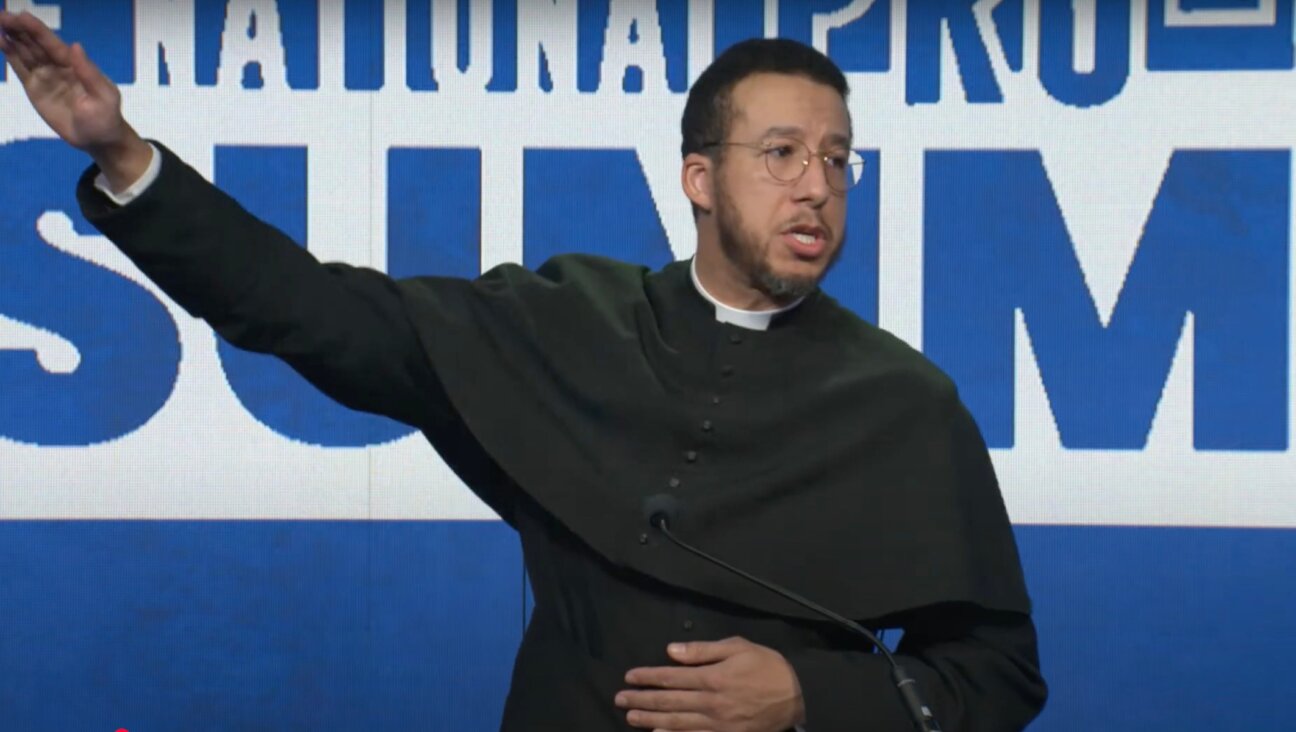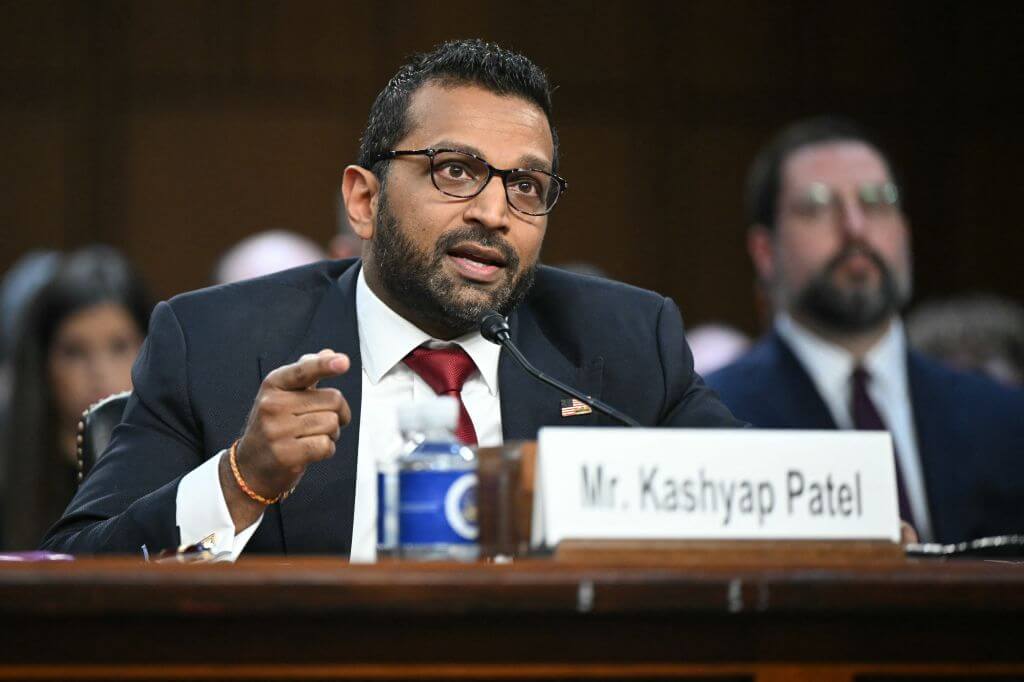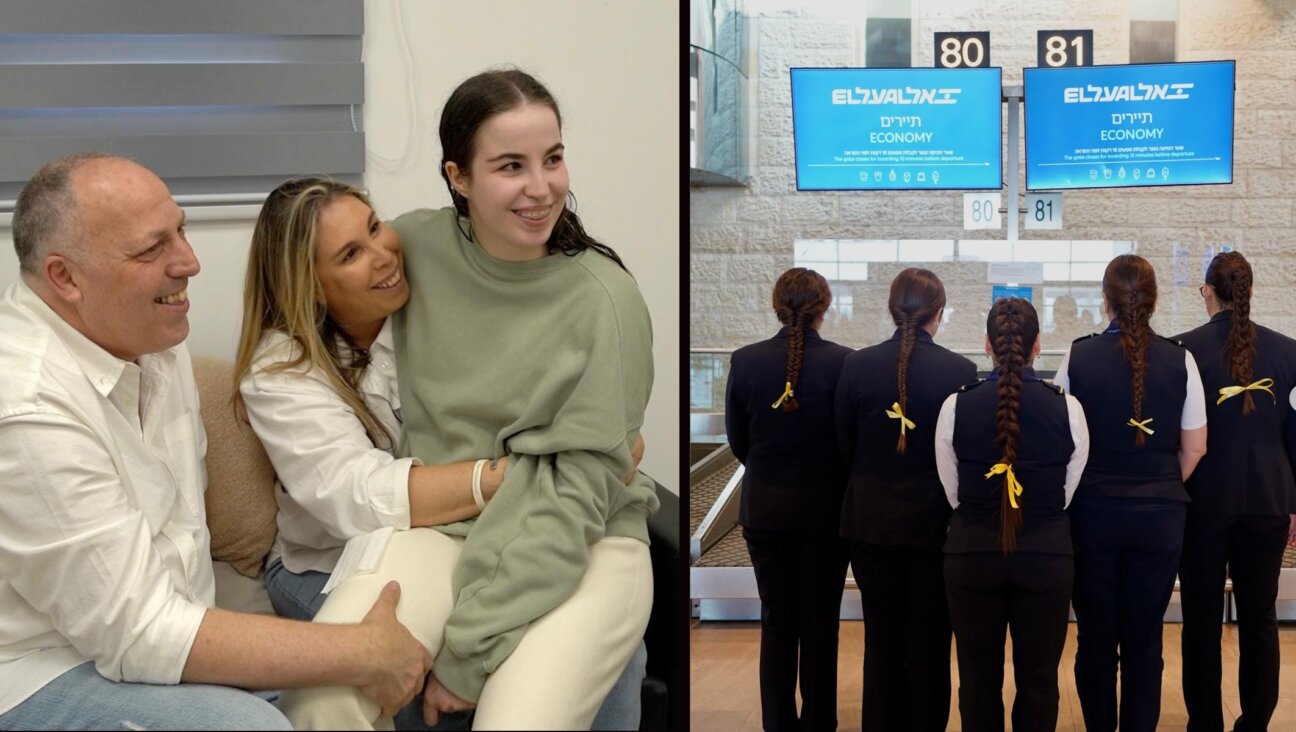How the murders of Jewish farmers connected an Argentine writer with his family’s past
A new book explores the triumphs and tragedies of Argentina’s first Jewish agricultural colony.
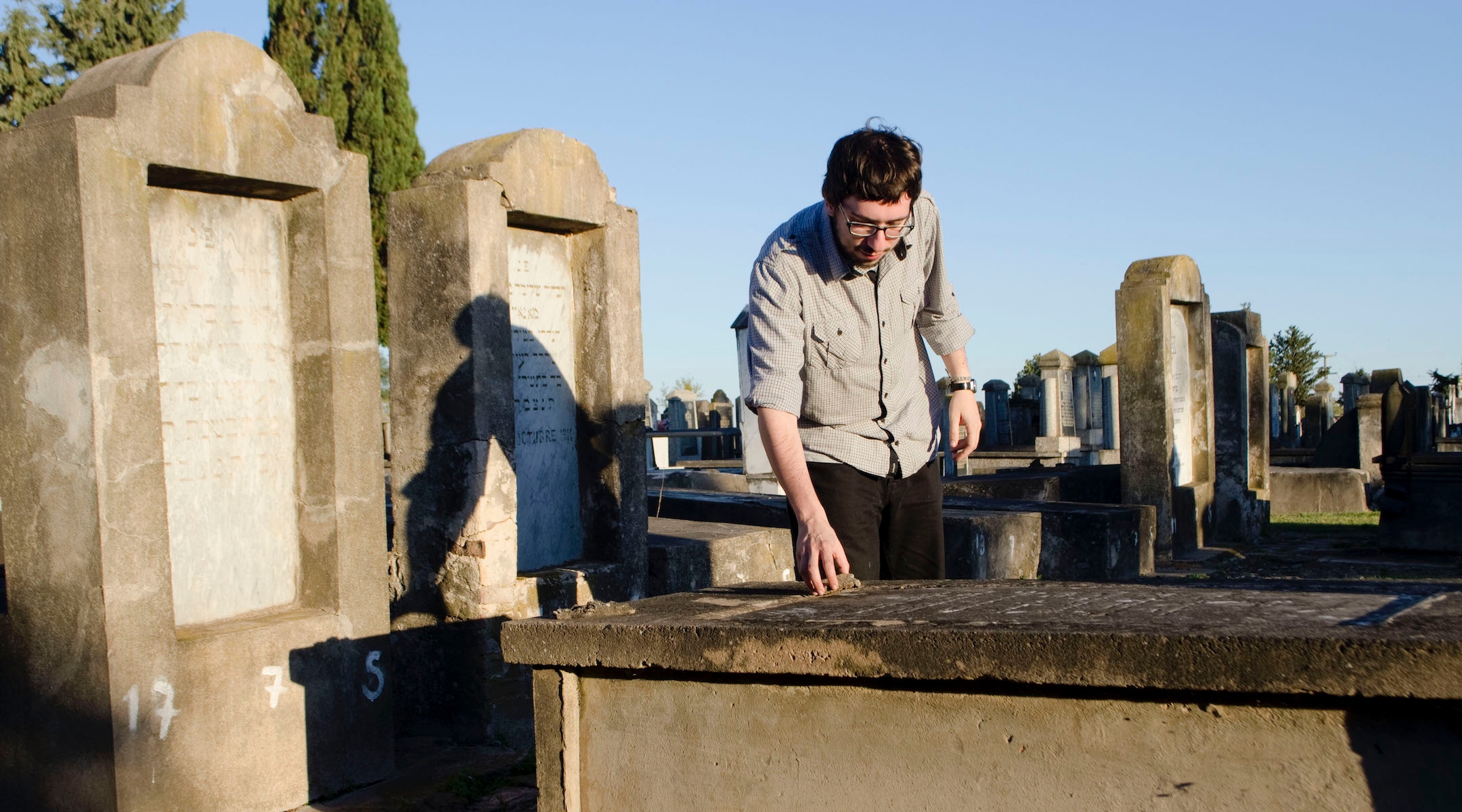
Javier Sinay visits the Jewish cemetery in Moises Ville, Argentina, during a visit to the village in 2013. (Paula Salischiker)
(JTA) — On June 9, 2009, Javier Sinay’s father sent him an email with the subject line “Your Great Grandfather.” The email linked to a Spanish translation of an article written in 1947 by Mijel Hacohen Sinay.
“The First Fatal Victims in Moises Ville” detailed a series of murders that had occurred in that village, the first rural Jewish community in Argentina, between 1889 and 1906. All the victims were recent Jewish immigrants, murdered by roving gauchos preying on their vulnerability.
“Reading this article raised many questions,” Sinay, an investigative journalist from Buenos Aires, explained in an interview with the Jewish Telegraphic Agency in New York during his recent book tour. “Why did my great-grandfather report on murders that were committed half a century earlier? Who were the people murdered? And why?”
One question led to another, and consequently Sinay started his own investigation, one that turned into something much bigger and deeper.
The result is “The Murders of Moises Ville,” a book that goes beyond true crime to become a history of Jewish migration to Argentina, as well as a travelogue of Sinay’s visits to Moises Ville, retracing his own family roots. A surprise success in Argentina, the book had three print runs and launched a national debate about collective memory in a society that often prefers to bury the past. It was published earlier this year in English by Restless Books.
The village of Moises Ville, where the murders occurred, is located around 400 miles north of the Argentine capital Buenos Aires. For Argentine Jews, it is a mythical place, to which they attach feelings of nostalgia like those American Jews feel for Manhattan’s Lower East Side. However, as Sinay underlines, “its history is unique since Argentina has the only Jewish community that started as an agricultural community.”
Fleeing poverty and pogroms, hundreds of thousands of Jews left Czarist Russia at the end of the 19th century. Munich-born philanthropist Baron Moritz von Hirsch founded the Jewish Colonization Association, which facilitated their resettlement in Latin America under the theory that Jews who lived in small shtetls would find it easier to become farmers in the New World than resettle in urban areas. However, as the books publisher puts it, “like their town’s prophetic namesake, these immigrants fled one form of persecution only to encounter a different set of hardships: exploitative land prices, starvation, illness [and] language barriers.”
The first residents of Moises Ville were a group of families from Bessarabia and the Podolia region in today’s Ukraine. The village would soon become the cultural center of Jewish life in Argentina. Among the founders were Sinay’s great-grandfather, Mijel Hacohen Sinay, who arrived in 1894, and Alberto Gerchunoff, who in 1910 would publish “Los Gauchos Judios” (“The Jewish Cowboys”), a collection of short stories set in a village inspired by Moises Ville. Gerchunoff’s book is considered the first Latin American literary piece focusing on Jewish immigration to the New World.
However, by the time the book was published, the majority of Jews had already moved to Buenos Aires, among them Mijel Hacohen Sinay and Gerchunoff, whose father was one of the people murdered in Moises Ville.
The 42-year old Javier Sinay was born and raised in Buenos Aires. When he first learned about the murders, he did not know much about Moises Ville or his family’s history.
“I always knew I was a Jew, but I was not raised in Jewish environment,” said Sinay, who started to work on this book when he was 28. “It felt like an ancient call to learn about my ancestors. I found myself a link in a chain.”
This chain did not only relate to his Jewishness, but also to his love for journalism. “Before I started my research, I did not know that I come from a family of journalists, tracing back to my great-grandfather, the protagonist of my book.”
In 1898, Mijel Hacohen Sinay founded Argentine’s first Jewish newspaper, the Yiddish language Der Viderkol (The Echo).
“He was barely 20 years old. Discovering this was just incredible,” Sinay said.
Sinay himself has worked for the newspapers La Nación and Clarín and as editor at the Argentine edition of Rolling Stone. He is currently a staff writer for REDACCION.com.ar, a solutions journalism news outlet.
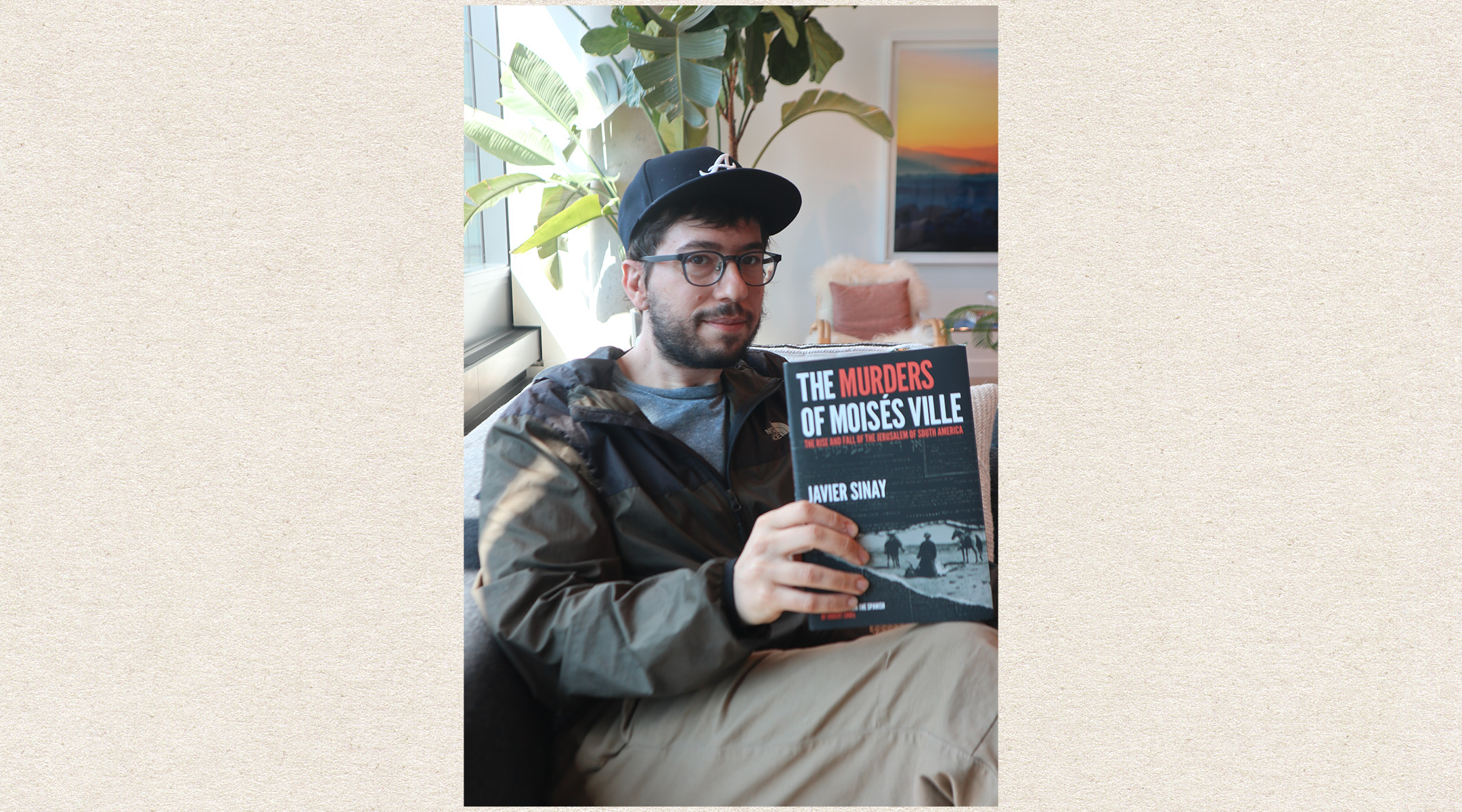
Javier Sinay worked on his book about Moises Ville and his family’s history for over a dozen years. (Julian Voloj)
To read his great grandfather’s work, however, Sinay had to overcome a language barrier. To learn Yiddish, he went to the Fundacion IWO, the South American counterpart of YIVO, the New York-based YIVO Institute for Jewish Research. “I didn’t even know how to read Hebrew letters,” he said.
He soon was able to read newspaper headlines and book titles in Yiddish, but despite his progress, “it was not enough to translate whole articles by myself.” Sinay was introduced to Ana Powazek de Breitman, known to her friends as “Jana,” the daughter of two Holocaust survivors from Poland, who would help him with the translations.
“I would go to the warehouse of Tzedek [a Buenos Aires Jewish charity] and look for old Yiddish books. If it looked like there could be something interesting for my research, I’d buy the book and give it to Jana to translate. She would read for me in Yiddish, then translate into Spanish while I typed up notes.” For four years, they would meet twice a week.
Original copies of his great-grandfather’s newspaper had been stored in the building of Argentina’s Jewish federation, AMIA, which was destroyed in 1994 in a terrorist attack. “The AMIA bombing is a very traumatic for all of Argentine Jewry, but nearly made my research impossible. It underlines that it was also the destruction of a culture,” said Sinay. Some newspapers survived and were part of an exhibition at the National Library of items rescued from the terrorist attack. However, after the exhibition, even those papers disappeared. Sinay hired a private investigator to find them, but until now, nothing was unearthed. “But I have not given up hope.”
The highlight of his investigation was his journey to Moises Ville. “I think I was the first one of the Sinays who went back after my family ended up in Buenos Aires,” he said.
Today, Moises Ville has just over 2,000 residents, about 10% of them Jewish. Jewish sites there include the Kadima cultural center, which contains a theater and library; the former Hebrew School, Argentina’s first Jewish cemetery and three synagogues. A particularly meaningful experience for Sinay was spending Shabbat in Moises Ville at one of the local synagogues.
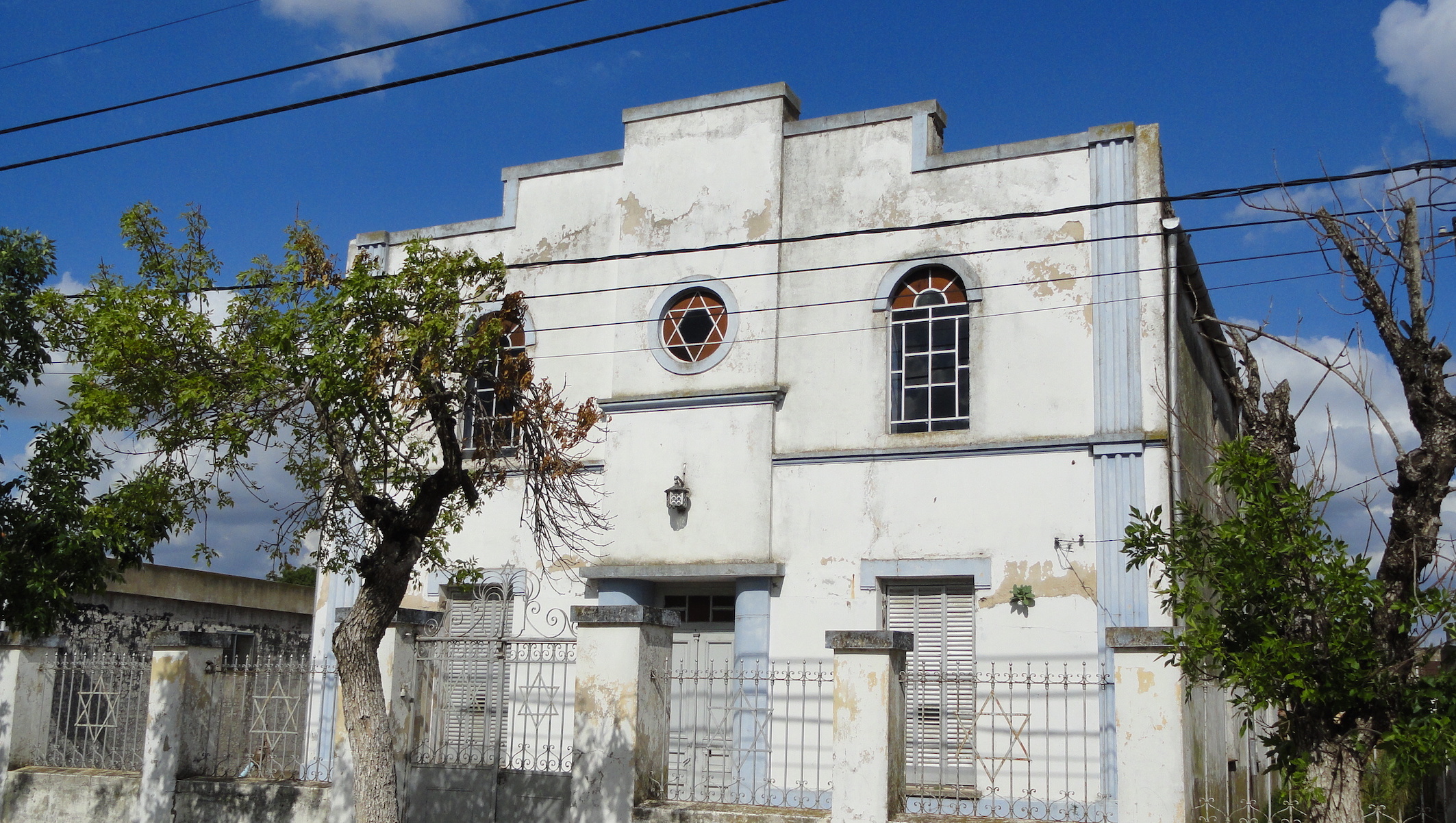
The Workers’ Synagogue (Arbeter Shul) in Moises Ville, Argentina, photographed in 2010. (Wikimedia Commons)
“I had never gone to synagogue before. I celebrated my first Kabbalat Shabbat in Moises Ville. It was a fascinating experience. I was thinking about my ancestors and about what kind of Jew I am. My upbringing has little in common with these immigrants, but I feel very connected to them,” he said.
“The Murders of Moises Ville” sheds light on a chapter in Argentina’s history that was widely forgotten.
“There is a romanticized image of immigration, but the reality was brutal,” Sinay explained. Although he was not able to find all the answers he was seeking, he believes that he understood why his great-grandfather wrote about the murders more than half a century after they took place.
“He wrote about the murders just after the Second World War, in a time of collective mourning. It was a catharsis remembering the dead, and even if it was not related to the Holocaust, it was part of the zeitgeist. He was talking about our history and our suffering. I don’t know if it is true, but it’s a theory I have,” he said.
Connecting as a reporter with his great-grandfather’s work is also a homage to the power of journalism, he said. “There is a lot of chaos in today’s journalism, but it is still possible to find good and meaningful stories that become our legacy.”
Reflecting on his own identity, he concluded: “I didn’t have a bar mitzvah, but maybe writing this book and reclaiming my Jewish identity through journalism was my bar mitzvah. And it’s something I have chosen, not something that was forced on me.”
This article originally appeared on JTA.org.
A message from our Publisher & CEO Rachel Fishman Feddersen

I hope you appreciated this article. Before you go, I’d like to ask you to please support the Forward’s award-winning, nonprofit journalism so that we can be prepared for whatever news 2025 brings.
At a time when other newsrooms are closing or cutting back, the Forward has removed its paywall and invested additional resources to report on the ground from Israel and around the U.S. on the impact of the war, rising antisemitism and polarized discourse.
Readers like you make it all possible. Support our work by becoming a Forward Member and connect with our journalism and your community.
— Rachel Fishman Feddersen, Publisher and CEO








